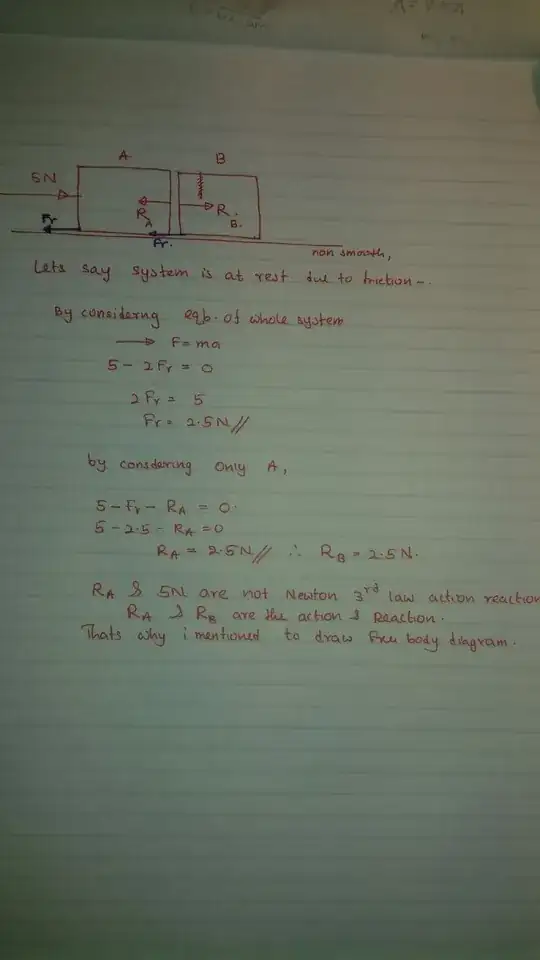I might be a little late in answering this question, but I hope it'll help.
Physics Footnotes emphasised that action and reaction forces occur simultaneously at the same time. This is correct. The words action and reaction do create the misconception that one force is the reason for the other.
Let me explain why these two forces happen simultaneously, with that knowledge you will understand why the reaction force(so called) does not act as yet another force. To understand this we must understand what causes a force.
A force is always caused by the interaction of two bodies.(We are not considering fictitious forces here) These two objects can be touching each other or may be some distance apart(Eg - gravitational force)
Taking your example, how would A have exerted the force of 5N, upon B? Possibly, A was in motion (relative to the earth) previously and would collide with B, thus exerting the force. (It is easy to visualise A as your hand and B as some object)
Before the collision, A would be in motion towards B,relative to the earth and thus, relative to B (B is in the same state of motion as the earth, which is the state of being still. So, as the earth and B share the same state of motion, a motion relative to the earth, is a motion relative to B as well) Also, relative to A, B would be in motion towards A.( If we regard A to be stationary, then B is the one that is moving)
- So, relative to A, B is the moving object and A is the stationary object. So, when the two objects collide, relative to A, It is B that exerts the force. (Because relative to A, it is B that comes towards it and collides) Relative to A, A was just moving along happily until This B came along and bumped into him, exerting a force upon A
- As in the traditional view, it is A that moves and collides with B. So, the collision would cause a force from A on B. Relative to B, B was sitting still, minding its own business until A came and bumped into him, thus exerting the force.
It is these two forces that are popularly regarded as action reaction force pairs.
Both forces exist simultaneously, relative to A, the acting force is a force of 5N, exerted upon it by B. Relative to B, the acting force is force of 5N exerted upon it by A.
With this understanding on how the forces concerned are created, it is easy understand that that the force exerted by B upon A (F1)does not lead to a whole new reaction force(so called) In fact, relative to A, the force exerted by it upon B can be regarded as the reaction force,to F1 (with the true sense of the third law, of course, which is to say that it is not a result of the first force)
If there is a certain force in some direction, the existence of another force is unavoidable( in the opposite direction, acting on the object which caused the force, to which we referred to first) Which is to say forces exist in pairs. Now, relative to A, it is B that exerts the force, So, relative to A, the action is the force exerted by B upon A.( Let's call it F1) Even as this action takes place relative to A, relative to B yet another action takes place. ( force exerted by A upon B, F2) For A, The action is F1. At the same time F2 is also exerted. For A, F2 is an indirect consequence of the collision. It can be considered to be the reaction force relative to A. ( The term "reaction" is not really suitable, but that is the commonly used term) Likewise For B, F1 is the indirect consequence; reaction. The creation of a whole new force as a reaction is not what Newton meant by the third law. So, every action has a reaction, as stated by the third law
